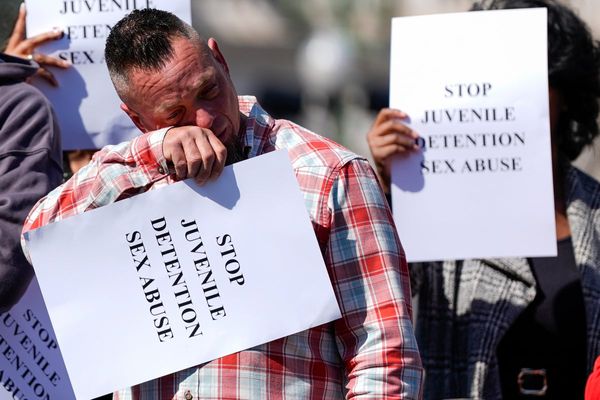
In physics, what goes up must come down. But in finance, that's not always the case.
With interest rates, for example, some short-term rates have been trending downward, such as with the Federal Reserve starting to cut the federal funds rate. Meanwhile long-term ones such as 10-year Treasuries or 30-year mortgages have remained relatively high or even increased in recent months.
Typically, different types and terms of interest rates are correlated. They might not move in lockstep, but the general direction is often consistent. Lately, however, there's been a split.
What's happening with interest rates?
In September, the Federal Reserve cut the federal funds rate (the cost for banks to borrow from one another, often overnight) by 50 basis points, followed by a 25 basis points cut in November, as it tries to loosen the strings that were tightened to fight inflation.
"It seems like the Fed's done a pretty good job of maintaining a path to slowly and steadily lower interest rates without having too much of a [negative] impact on the economy overall," said Jonathan Ernest, assistant professor of economics at Case Western Reserve University. "In the short run, there's a little bit more certainty in that sense, which means that — as we typically see — other rates have followed along with the Fed for things like borrowing to start a business, to purchase a car, to get a 12-month CD, by falling as well.
Still, when short-term rates drop, that often affects long-term rates, too. That's partly because if it costs less to borrow money in the short term, there's less incentive to pay higher interest rates for long-term lending. If the gap gets too large, borrowers would be more inclined to choose the lower-cost, shorter-term rate and renew loans later if needed.
Also, long-term rates generally reflect future expectations. If short-term rates are falling because inflation is down, that's not necessarily a temporary phenomenon; instead, investors might expect low inflation to follow for the next several years, causing long-term bond rates to fall.
Yet that's not what's happening now. The 10-year Treasury yield, for example, did fall from around 4.6% in April 2024 to 3.6% in September right before the Fed cut. However, it climbed back to nearly 4.5% shortly after the election in November, due to uncertainty around the U.S. economy's future.
"For longer-term rates that are for 10, 20, 30 years, there's just more uncertainty, more potential for change, for instability," said Ernest.
Part of the concern is that policy changes from the incoming Trump administration could affect the long-term economic outlook.
"If we do see the tariffs that Trump was talking about on the campaign trail — 10% across the board, 60% on everything from China — that will definitely have inflationary effects in the United States," said Aleksandar (Sasha) Tomic, associate dean for strategy, innovation, and technology at Boston College. "It will also slow down the economy at the same time."
If that happens, it could prompt further Fed cuts to try to spur economic demand. Yet cutting short-term rates could then lead to more inflation, thereby affecting long-term rates.
Meanwhile, if Trump's policies around cutting income taxes come to fruition, that could significantly increase the federal deficit. One estimate by the Tax Foundation suggests that Trump's tax proposals could cost nearly $6 trillion in lost revenue over 10 years, even after accounting for tariff revenue.
If that happens, "eventually, we need to pay for that in some way. A lot of times the way that's been done to an extent is inflating the currency in order to pay back creditors," said Ernest.
Plus, if the Treasury has to issue substantially more debt to fund the government, that can cause yields to increase in order to try to attract more demand to keep up with the increased supply of these securities.
There's also the risk that prices rise faster than wages, which "affects people's ability and willingness to save," said Ernest. Rather than thinking "I'll put this money aside in a nest egg for 10 years down the road, you're likely to think that you need to use it pretty soon. And therefore, at best, you're trying to get some kind of short-term return on it."
So if demand for long-term bonds or CDs decreases, for instance, that causes yields to go up to attract investors.
Still, much depends on the actual implementation of any proposed policies. For example, long-term bond yields fell in a positive reaction to Trump's proposed Treasury Secretary nominee, Scott Bessent, a hedge fund manager who's expected to take a more moderate approach on issues like tariffs.
What should you do?
With short-term rates falling and long-term rates staying high or rising, individuals might feel confused about what to do.
For one, 30-year fixed-rate mortgage rates fell from over 7% in May 2024 to just over 6% around the time of the Fed's September rate cut. Now, however, they've climbed back to nearly 7%, according to Freddie Mac data.
So, prospective homebuyers who were waiting for rates to fall before buying a home may be frustrated with these developments. The reality, though, is that mortgage rates might not be falling dramatically anytime soon.
"I don't expect anything moving hugely one way or the other with mortgages for at least a year or two," said Tomic. So, borrowers more so have to ask themselves questions like how much can they afford, how long do they plan to live in that house, how does buying compare to renting, etc., he adds.
Borrowers — whether for mortgages or other types of loans — should also consider being a little more discerning in this environment.
"I think shopping around right now where there's a little bit of uncertainty makes a lot more sense, not just going with the first offer that you receive," as different lenders may have different models predicting the future, said Ernest.
"If it's a variable loan, be very careful and know how costly it could be if the rate does increase," he added.
But for the most part, you don't necessarily need to do anything drastically different. Many best practices remain useful amidst uncertainty.
"The biggest thing is to try to be as responsible as possible," said Tomic.
Whether it's mortgages, credit cards, etc., "the interest rates are really kind of secondary," he added. Instead, it's more important to make sure "you are not financing things that you cannot afford, because when you fall into that trap, that's pretty dramatic no matter what the interest rates are."
Similarly, investors trying to capitalize in this environment might not want to do anything drastic either. Small moves like diversifying across short- and long-term rates could make sense, notes Ernest, while understanding that the Fed's expected path is to cut rates further, so you're probably not going to get better offers on short-term rates in a couple months compared to today.
But for the most part, trying to speculate on what will happen is ill-advised, especially for non-professional investors.
"Everything that I have observed over the last few business and investment cycles is that the basic strategies tend to work most of the time, which basically means you want to have diversification based on your investment objectives," said Tomic.







